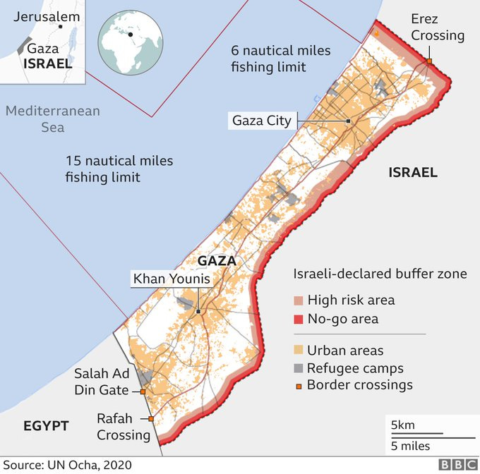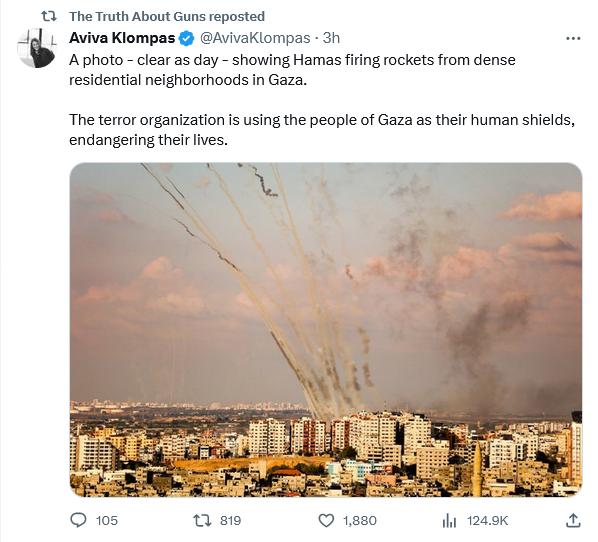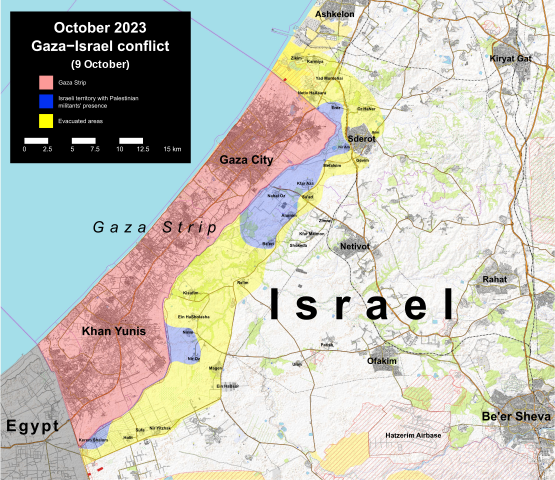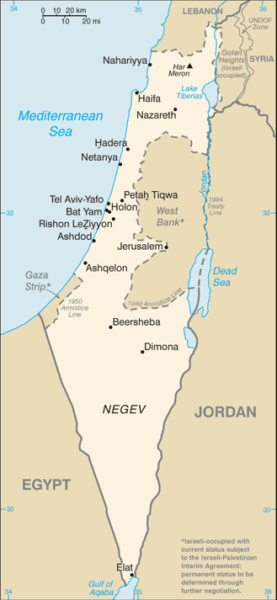In UnHerd, Edward Luttwak explains why Israeli intelligence was deceived leading up to the Hamas terror attacks last week:

The last major news item about Gaza before the first news of Hamas’s surprise attack was the September 22 announcement that 17,000 Gazans would immediately receive permits to work in Israel, with that number set to rise to 20,000. All understood the likelihood of a permit-holder smuggling in a bomb, or perhaps stabbing an Israeli fellow worker, but that seemed a risk worth taking.
Hamas, after all, had stopped launching rockets against Israel, and appeared to be focused on containing the influence of Islamic Jihad — Hamas’s only remaining competitor after its suppression of the PLO, and one which is financed by Iran to propagate Shi’ism in Gaza. This obvious rivalry was skilfully exploited by Hamas to deceive the Israelis into thinking that it was no longer launching rockets because, as an emphatically Sunni organisation, it wanted to join the Sunni reconciliation with Israel that was already a fait accompli from Morocco to Bahrain.
Once again, as so many times before, Israel’s leaders were deluded into thinking that a Palestinian leadership had some concern for the welfare of its own people, as opposed to its ideological aim: “Palestine” for the nationalist PLO (which always included Christians), and Islamic supremacy for Hamas. The latter’s leaders have frequently explained that Islamic rule must be imposed not just on Israel but on the entire world, and that Palestinian nationalism is un-Islamic twice over — because it includes Christians, and because any nationalism intrinsically subverts Islamic unity.
With Hamas seemingly on a path to reconciliation, only the much smaller Islamic Jihad was still assembling and launching rockets. But most of those attempts were pre-empted by Israeli strikes, guided by precise intelligence supplied by a seemingly reliable agent network. Almost certainly, Hamas itself supplied the “actionable” information passed on by those agents. This efficiently blinded Israeli intelligence, which has plenty of expertise in detecting double agents peddling false information, but could hardly suspect agents who were supplying highly accurate information.
This was the first Israeli failure: its intelligence analysts did not realise that the silence of Hamas was not due to inactivity, but to planning that they could not detect. Such silence was far from normal, and it should have inspired efforts to find out what was going on. But it did not.
On top of that, there was a separate failure which was purely military. Even if intelligence reported that all was well and that Gaza was on the path to peace, military planners should not have yielded to such optimism — for a very specific Israeli reason. Since the Israeli armed forces rely on reservists, who must be recalled to duty and kitted out before they can fight, as opposed to an enemy that can switch from peace to war instantaneously, military planners must be professional pessimists no matter what. They must always be mindful of the minutes needed to broadcast an alert, of the hours that even soldiers in situ need to prepare for action, and the full 24 hours required to mobilise the reservists.
At Spiked, Frank Furedi is angered by the widespread victim-blaming being shared on social media to pretend that the Hamas terror attacks were somehow “legitimate” and the atrocities committed against civilians somehow “okay”:
The assault on southern Israel last weekend was more than an atrocity. This callous and systematic murder of civilians was nothing less than a 21st-century version of a barbaric pogrom. The videos recorded by Hamas operatives as they slaughtered people serve as a frightening testimony to human depravity. They more than match the numerous beheading videos that glorified the barbarism of Islamic State and other terrorist organisations in recent decades.
Seeing the Hamas-orchestrated pogrom was gut-wrenching. But what I have found almost as disturbing are the smug voices of those in the West who say that Israel is responsible for Hamas’s barbarism. That it brought this horror on itself.
Ever since Hamas operatives embarked on their depraved killing spree, self-styled “progressives” have been queuing up to tell anyone who will listen that the evil Zionists had it coming. Not even this week’s reports of Hamas’s massacre of babies have given them pause for reflection. Their victim-blaming is echoed by numerous Western Muslim organisations and even by some mainstream politicians. They too say that Israel had it coming. With his usual smug complacency, former Greek finance minister Yanis Varoufakis declared in an interview that he would never denounce Hamas for these atrocities. Pointing the finger at Israel, he stated that “the path to ending the tragic loss of innocent lives – both Palestinian and Israeli – begins with one crucial first step: the end of the Israeli occupation and apartheid”.
Varoufakis’s apologism for atrocities against Jewish men, women and children appears civilised compared with the response of the West’s Palestine-solidarity campaigns. Many of them have actively celebrated this pogrom. One speaker at an “All Out for Palestine” protest outside the Israeli consulate in New York seemed to think that the systematic murder of 260 young people at the Supernova music festival provided excellent “comedy” material. “As you might have seen, there was some sort of rave or desert party where they were having a great time”, he said, “until the resistance came in electrified hang gliders and took out at least several dozen hipsters”. The rabble assembled outside the Israeli consulate responded to this “joke” about the mass murder and kidnapping of “several dozen hipsters” with gales of laughter.
Time and again, these atrocities are excused and their victims are dehumanised. Dr Mennah Elwan, an NHS medic, tried to excuse Hamas’s assault on innocent Israeli civilians by claiming that these youngsters fleeing for their lives were not civilians at all, because “there are no civilians in Israel”. She then said of the revellers that “if it was your home, you would stay and fight”.
On Saturday, while the pogrom against Jewish people was still unfolding in Israel, Somali-American journalist Najma Sharif felt the need to remind her followers on X: “What did y’all think decolonisation meant? Vibes? Papers? Essays? Losers.” That she associates a blood-soaked pogrom with the objectives of the “decolonisation” movement in Western universities is revealing.
Indeed, Sharif was far from alone in framing this pogrom as an instance of decolonisation. This view has been systematically promoted by Hamas apologists. Maggie Chapman, a Green member of the Scottish parliament, responded to public disquiet over the Hamas attack by posting: “The oppressed are fighting back for their rights … Don’t let the Western media fool you into thinking it’s terrorism, this is decolonisation.” It is worth noting that Chapman is deputy convenor of the Scottish parliament’s human-rights committee. How long before she argues that perpetrating a pogrom is the human right of the oppressed?
The “decolonisers”, whether they realise it or not, are sending an unambiguous message to the world: “This is no time to be squeamish; after all, they are only Jews.”

















